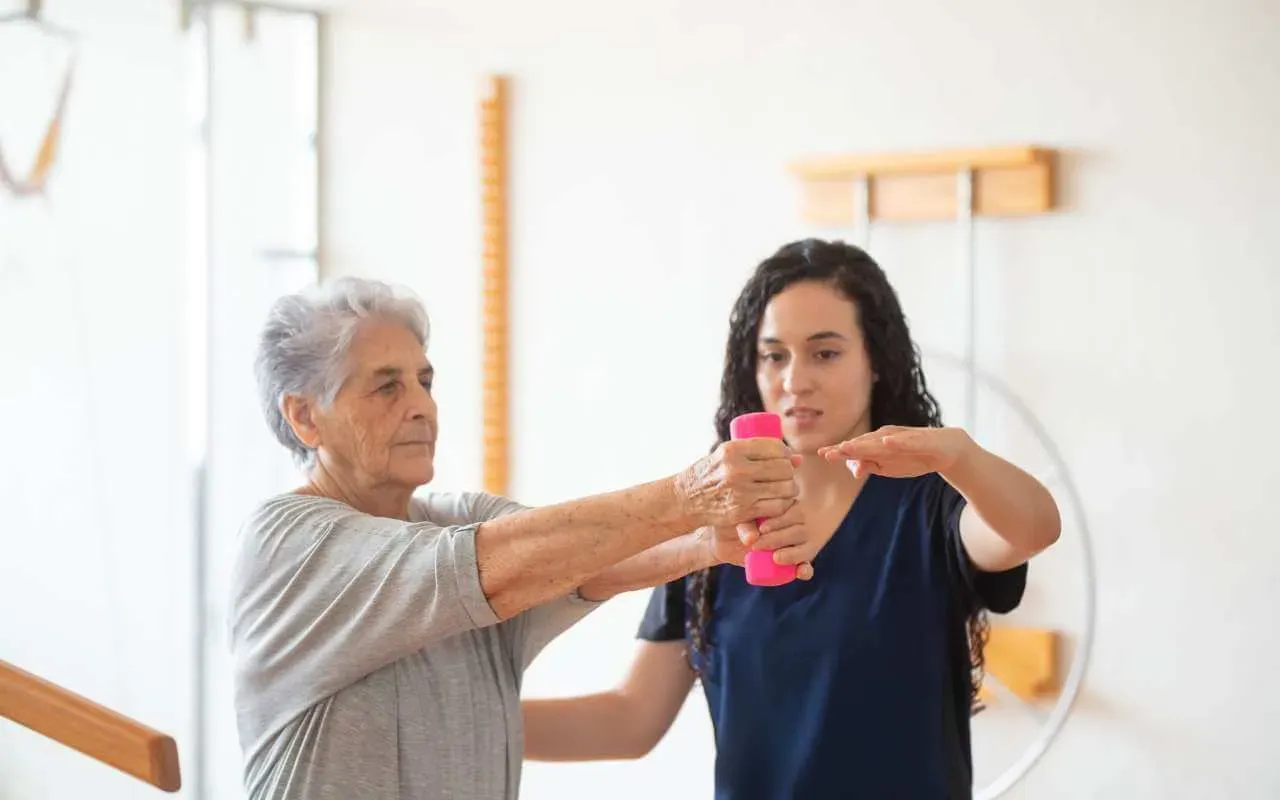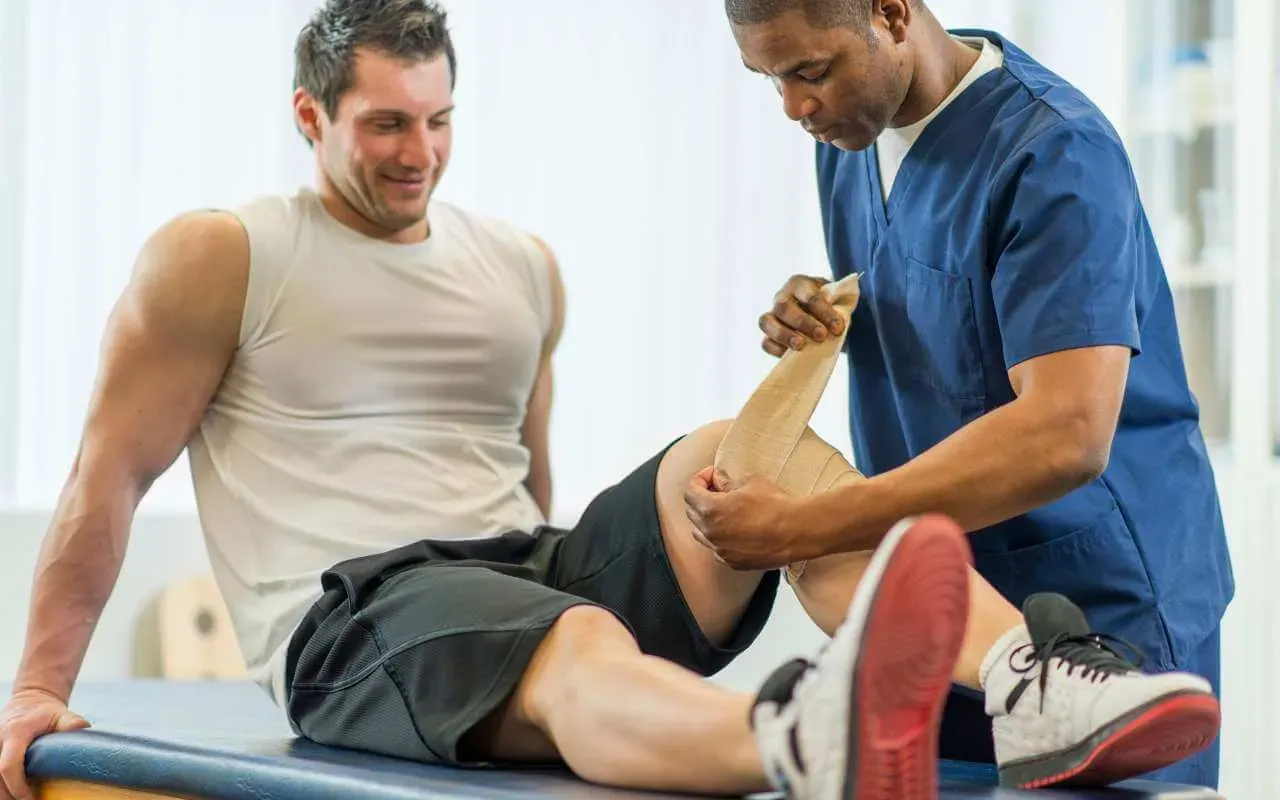Best Physical Therapy Schools in America in 2025
Choosing the best physical therapy (PT) school is not a decision to be taken lightly. The landscape of PT school rankings is dynamic, and there is no definitive answer. In this blog, we will equip you with knowledge and insights that will help you make an informed choice—a choice that aligns not just with the general perception of ‘prestige’ but, more importantly, with your individual goals and learning style.
Don’t miss out on funding for your physical therapy education, and apply for scholarships now!
Top 10 Physical Therapy Schools in the United States
Choosing the right college for your education is crucial for aspiring doctors of physical therapy. Each college boasts distinct strengths that can significantly influence your professional path.
However, it’s essential to consider personal preferences, needs, and other logistics. In this section, we will explore a diverse mix of top-tier and noteworthy schools in different parts of America.
1. University of Southern California
The University of Southern California (USC) is well-known for its excellent physical therapy education. USC has state-of-the-art facilities and a curriculum that focuses on practical experience, preparing students to succeed in different clinical settings.
2. Washington University in St. Louis
At Washington University in St. Louis, the program emphasizes using the latest research findings in patient care, ensuring that prospective students have up-to-date knowledge and skills combined. Collaborations with top healthcare facilities also enhance the learning environment here.
Get Matched to Thousands of Scholarships
Create your Bold.org profile to access thousands of exclusive scholarships, available only on Bold.org.
Create Free Profile3. University of Pittsburgh
The University of Pittsburgh in Pennsylvania (PA) is recognized for its extensive research opportunities, encouraging students to take part in groundbreaking projects alongside their studies. This school is ideal for those who want to contribute to the scientific community while developing their clinical abilities.
4. Northwestern University
Northwestern University stands out with its innovative teaching methods, incorporating simulation and technology into the curriculum. Students also benefit from a wide range of hands-on training experiences that prepare them for real-world situations.
5. University of Delaware
The University of Delaware provides a supportive learning environment with dedicated faculty members. Its program is designed to nurture critical thinking and problem-solving skills that are crucial for achieving positive patient outcomes.
6. MGH Institute of Health Professions
Located in Boston, the MGH Institute of Health Professions offers immersive learning opportunities through its partnerships with prestigious medical centers. Graduates gain comprehensive clinical expertise during their time here.
Interested in physical therapy? Kinesiology is a similar field of study. Take a look at the best kinesiology programs for more college options.
7. Emory University
Emory University’s program stands out for its focus on service learning and community involvement, giving students a well-rounded understanding of patient care beyond traditional healthcare settings.
8. Duke University
Duke University is known for its interdisciplinary physical therapy program, allowing students to work with professionals from various healthcare fields and fostering a collaborative mindset essential in modern healthcare.
9. University of Iowa
At the University of Iowa, hands-on skill development is emphasized, with students getting extensive clinical exposure early on. This approach ensures that graduates are confident and competent practitioners when they enter the workforce.
10. Arcadia University
Arcadia University distinguishes its physical therapy with a global perspective, offering opportunities for students to study abroad and gain insights into different cultures and global health issues.
When exploring these options, remember to dig deeper into specific details of physical therapy education, such as faculty qualifications, specialized tracks, and alumni connections, which can greatly influence your future professional path.
Students interested in physical therapy may also want to explore occupational therapy scholarships.

Other Notorious Departments of Physical Therapy
Although we ranked the top 10 programs for physical therapy in America, there are other universities that have accredited programs that should be considered by an aspiring doctor of physical therapy.
The University of The Incarnate World
The Physical Therapy program at the University of the Incarnate Word in San Antonio, Texas, offers a rigorous curriculum blending theory with hands-on learning. Led by experienced faculty, students gain real-world life experience through clinical rotations and community engagement in San Antonio. With a focus on learning health professions through holistic wellness and evidence-based practice, students are prepared to excel in diverse healthcare settings to improve the lives of future patients in Texas.
The University of St. Augustine for Health Sciences
The University of St. Augustine for Health Sciences in San Marcos, California, provides high-quality science and healthcare programs in the classroom, blending rigorous academics with hands-on experience. Led by expert faculty, students graduate prepared to excel as compassionate professionals in the healthcare field.
Columbia University
Columbia University’s Physical Therapy program, part of the Ivy League institution, offers students access to New York City’s vibrant healthcare ecosystem. With a blend of academic rigor and hands-on anatomy learning in the classroom, graduates emerge prepared to lead in patient care and innovation in New York.
Boston University
Boston University’s Physical Therapy program stands out for its innovative approach to education, blending cutting-edge research with practical application. Through immersive learning experiences and collaborative projects, a student develops a deep understanding of patient care and rehabilitation techniques.
How to Apply for a Physical Therapy Program
Applying for some of the best schools of physical therapy is a process that requires careful planning and preparation. Here’s a step-by-step guide to help you navigate the application process effectively:
1. Preparation Phase
Start by researching various physical therapy schools, their requirements, curriculum, and admission policies. Look at the specific prerequisites and start fulfilling them as early as possible. This can include courses in biology, physics, and chemistry.
2. Gather Necessary Materials
These typically include your transcripts, letters of recommendation, and personal statements. Some schools might also require you to submit standardized test scores such as the GRE.
3. Complete the PTCAS Application
The Physical Therapist Centralized Application Service (PTCAS) is a service used by most physical therapy programs for their application process. It allows you to apply to multiple programs with one application.
4. Submit Supplemental Applications
Some schools might require additional information or essays beyond what’s provided in the PTCAS application. Be sure to check each school’s requirements and deadlines.
5. Prepare for Interviews
If selected for an interview, prepare by reviewing common interview questions; understanding the school’s philosophy, program details, and possible scholarships will help with reflecting on your own experiences and goals.
Remember: Every physical therapy school has its unique set of requirements and deadlines. It’s crucial to stay organized, double-check all materials before submission, and adhere strictly to deadlines. Aspiring physical therapists who have a proactive approach will increase your chances of securing admission into your desired program.

Tips for Applying to Physical Therapy Top Schools
Embarking on the journey to become a physical therapist is as exhilarating as it is demanding. When it’s time to apply to physical therapy schools, preparation and attention to detail can make all the difference.
1. Start Early
Begin preparing your application materials well in advance. This includes studying for and taking the GRE (most DPT programs require applicants to complete the GRE), obtaining letters of recommendation, and drafting personal statements.
2. Volunteer or Work Experience
Gain experience through volunteer work or employment in physical therapy settings. This not only boosts your resume but also gives you a clearer picture of the profession.
3. Research
Delve into each school’s prerequisites and ensure you meet them. Tailor your application to highlight how your background aligns with their specific program.
4. Letters of Recommendation
Seek out recommenders who know you well and can speak to your potential in the field of physical therapy — think professors, mentors, or employers in the field.
5. Personal Statement
Use this as an opportunity to tell your unique story. Explain why you’re drawn to physical therapy and what makes you a great candidate for the profession. If you are unfamiliar with it, we have some guidance on how to write a compelling personal statement.
6. Prepare for Interviews
If the schools you apply to require interviews, practice answering common questions and presenting yourself confidently.
Adjacent fields like speech pathology can also be smart areas for physical therapists to study! Apply for speech pathology scholarships today.
Becoming a Physical Therapist: Choosing the Right School
Visit campuses: Take the time to visit the PT schools you’re interested in. This will give you a firsthand experience of the atmosphere and an opportunity to talk to current students and faculty members. Their insights can be invaluable in helping you make the right decision.
Consider your goals and values: Look for a school that aligns with your specific career goals and values. This includes evaluating the health and science curriculum, community, and resources offered by each institution. Make sure they resonate with what you envision for your future as a physical therapist.
Look beyond rankings: While PT school rankings can be a useful starting point, they shouldn’t be the sole factor influencing your decision. Remember that each school has its own strengths and areas of expertise. What matters most is how well these align with your aspirations.

Frequently Asked Questions About Physical Therapy Schools
How do I choose a physical therapy school?
Consider factors like location, curriculum, and faculty expertise. Research most schools that are aligned with your goals and visit campuses to make an informed decision. Look if there is an associate professor in the department to gauge faculty expertise.
Any tips for applying to top physical therapy schools?
Start early, gather materials, gain relevant experience, and tailor your application. Consider rankings from sources like the World Report and research schools that are aligned with your goals. Look for opportunities to connect with current students and prepare for interviews if required, increasing your chances of admission.
How can I succeed as a physical therapist after graduation?
Gain hands-on experience, stay informed about advancements, and consider further education. Continuous learning will prepare you for a successful career in physical therapy.
Create your Bold.org profile today! Access scholarships and expert advice to propel your journey!

About Jaeme
Jaeme Velez is an exceptionally dynamic writer, researcher, and avid enthusiast for science and technology. He brings a deep understanding of securing scholarships, obtaining student loans, and navigating the transition from community college to university.
As a first-generation college student, Jaeme began pursuing the dramatic arts and made a significant transition to pursuing academic studies at L.A. Valley College, focusing on Communication and English. He graduated cum laude with a B.A. in Creative Writing at Columbia University in the city of New York. His academic excellence has been recognized through the Casdin Family Scholarship Award and his membership in the Columbia University Honor Society.
Jaeme's academic path is marked by a profound passion for literature and storytelling, particularly in exploring the confluence of diverse cultures and languages while addressing social disparities. Alongside his literary interests, Jaeme maintains a keen curiosity for science and technology, actively engaging in research and projects related to Artificial Intelligence, Design, and human-computer interaction.
Experience
Balancing work and full-time studies as a first-generation college student has endowed Jaeme with a wealth of experience and insights. In his role as a Content Writer at Bold.org, Jaeme shares invaluable wisdom and advice, drawing from his personal journey to provide the guidance he wishes he had received at the start of his academic journey.
His work is fueled by the desire to equip the next generations of students with the knowledge and tools necessary to navigate their unique academic paths. From financial literacy to maintaining a healthy lifestyle, Jaeme strives to contribute to the ongoing discourse on education and support the next generations of scholars, regardless of their age, background, or current stage in life, as they traverse the complexities of higher learning.
Since joining the Bold.org team in 2023, Jaeme has employed his distinctive background as a first-generation student alongside his familiarity with scholarships and student loans to guide students through the intricacies of academic life, emphasizing that every student's journey is distinct and worthy of recognition.
Through his writing and advocacy, Jaeme leverages his personal and professional experiences to provide comprehensive support to students. He is dedicated to empowering students and addressing the challenges they encounter in their pursuit of higher education.
Quote from Jaeme
“Who is the person? What's their problem? Do your research. Offer solutions.”